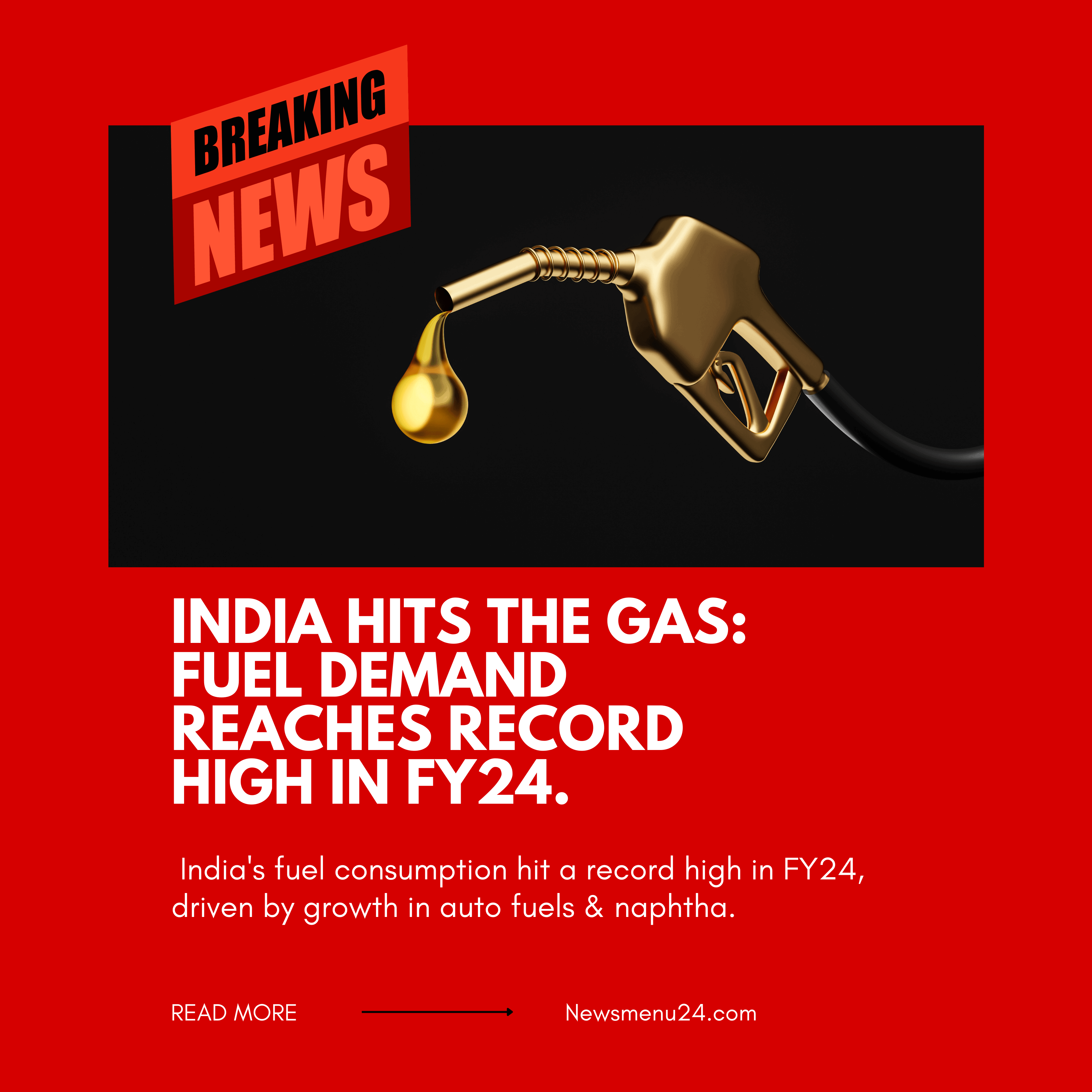Strong economic indicators and a positive outlook for India! Data from the Petroleum Planning and Analysis Cell (PPAC) reveals a significant increase in India’s fuel demand for the financial year 2024 (FY24). While consumption dipped slightly in March compared to the same month last year, overall India’s fuel demand for the entire fiscal year surged by an impressive 5%, reaching a record high. Let’s delve deeper into this trend and explore the factors driving this growth.
Table of content
- 1 A Banner Year for Fuel Consumption (India Fuel Demand, FY24 Fuel Consumption)
- 2 The Power of Auto Fuel and Naphtha (India Auto Fuel Sales, India Naphtha Sales)
- 3 A Look Beyond the Headlines (India Fuel Consumption Analysis)
- 4 Looking Ahead: Sustainable Solutions (Sustainable Fuel India, India Alternative Fuel Sources)
A Banner Year for Fuel Consumption (India Fuel Demand, FY24 Fuel Consumption)
FY24 witnessed a total fuel consumption of 233.276 million tonnes, a clear jump from the previous year’s 223.021 million tonnes. This translates to a daily average demand of 4.67 million barrels per day (mbpd) compared to 4.48 mbpd in FY23. While March saw a small decline, the overall growth in India’s fuel demand for the year signifies a positive sign for India’s economic activity.
The Power of Auto Fuel and Naphtha (India Auto Fuel Sales, India Naphtha Sales)
The report highlights two key contributors to this rise in India’s fuel demand: auto fuels and naphtha. Auto fuels, which include petrol and diesel, are the lifeblood of the transportation sector. Increased sales of vehicles, coupled with a potentially resurgent travel industry, likely fueled the demand for these fuels. This indicates a revival in economic activity and consumer spending, particularly in sectors reliant on transportation.
Naphtha, a petrochemical feedstock, is used in the production of various industrial products like plastics, solvents, and textiles. A rise in naphtha sales suggests an uptick in manufacturing activity, which is another positive indicator for the Indian economy.
A Look Beyond the Headlines (India Fuel Consumption Analysis)
While the overall trend is encouraging, it’s important to acknowledge some nuances. The slight dip in March consumption could be due to various factors, such as seasonal variations or temporary price fluctuations. Additionally, the data doesn’t differentiate between petrol and diesel consumption within the auto fuel category. A deeper analysis could reveal if the rise is primarily driven by petrol (cars and two-wheelers) or diesel (trucks and buses), offering insights into specific sectors within the transportation industry.
What This Means for India (India Economic Growth, Impact of Fuel Demand on India)
This record-breaking Indian fuel demand signifies positive developments for the Indian economy. Increased consumption of auto fuels suggests a revival in transportation and consumer spending. The rise in naphtha sales indicates growth in the manufacturing sector. Overall, this data paints a picture of an invigorated economy with a potential for further expansion.
Looking Ahead: Sustainable Solutions (Sustainable Fuel India, India Alternative Fuel Sources)
As India celebrates its record-breaking India fuel demand, it’s crucial to acknowledge the environmental implications. The government and private sector must work together to promote sustainable practices and explore alternative fuel sources. This could involve investments in electric vehicles (EVs in India), biofuels, and renewable energy infrastructure (Renewable Energy in India). By adopting a balanced approach, India can ensure continued economic growth while minimizing its environmental impact.
Conclusion
India’s record-breaking fuel demand in FY24 is a welcome sign for the nation’s economic health. However, it’s important to remain mindful of the environmental impact and explore sustainable solutions for the future. By fostering innovation and embracing greener alternatives, India can ensure long-term economic prosperity while safeguarding the environment.
For More Click Here.
